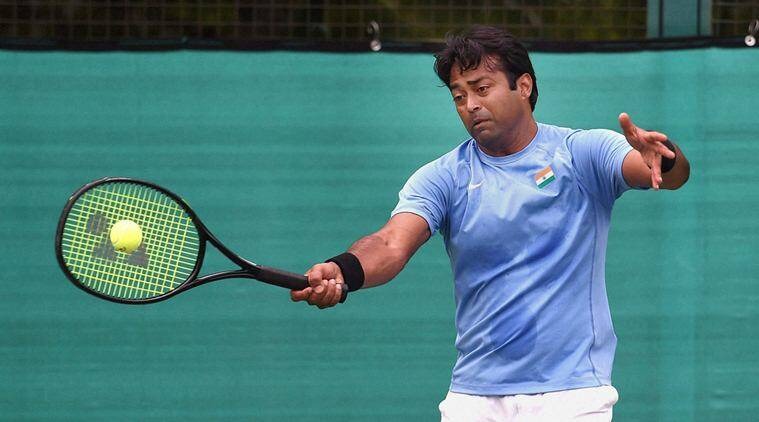
If you asked most Indian sports fans to find Fréjus on a map, you’d likely be greeted with quizzical looks. Famous for its Roman ruins and well-preserved 42km-long aqueduct, the small town on France’s south-eastern coast is nowhere near as well-known as its neighbours like Cannes, Nice and Marseille. But what happened there over three days nearly three decades ago would have huge implications for Leander Paes and Indian tennis.
By July 1993, the sport in India was staring hard at transition. Vijay Amritraj had roused himself to lead the charge to the Davis Cup final in 1987 – India lost 0-5 to Sweden – but by the late ’80s, he was known more for his appearances in Bond and Star Trek movies. Ramesh Krishnan, his accomplice as India remarkably made the ’87 final, was also on his last lap. He hadn’t qualified for the main rounds of a Grand Slam since the US Open in 1991, and had never gone past the third round in any of the major clay-court events.
Paes, the face of the new generation, was as raw as could be. Despite winning the Wimbledon junior title in 1990, he had never managed to reach the main draw at a Grand Slam. He had reached the final qualifying round in New York in 1992, but there had been nothing to suggest that he could make the step up and scale the sort of heights that Amritraj (four Grand Slam quarterfinals) and Krishnan (three forays into the last eight) had in their prime.
Apart from his exploits as a junior, Paes had caught the eye when India defeated Switzerland in the first round of the Davis Cup World Group that year. At the Calcutta South Club, where he knew the courts like the back of his hand, Paes had taken apart Jakob Hlasek, who had once been ranked No.7 in the world. Hlasek was no mug on grass either, having reached the fourth round at Wimbledon in 1987. But after a tight first set (7-5), Paes blew him away (6-1, 6-2) to give India the lead in the tie.
“One of the best players in the history of our sport”- praised by none other than @RafaelNadal.
Such was the charm of @Leander.
Celebrating #Leander @ 50.@ThumsUpOfficial @debasissen @BoriaMajumdar #HappyBirthdayLeander #Paes #LeanderPaes pic.twitter.com/eWucngqPq0
— RevSportz (@RevSportz) June 17, 2023
He and Krishnan then held their nerve to edge Switzerland in a five-setter in the doubles, and though Paes was overpowered by Marc Rosset in the reverse singles, Krishnan’s grass-court nous saw India progress to Fréjus, and the quarterfinal with France.
On clay, no one gave India a sniff. Henri Leconte had just turned 30, and was no longer the magician who had reached both the French Open and Wimbledon semifinals in 1986. But a run to the last four at Roland Garros in 1992 showed that he still had the game to dominate on clay. As for Arnaud Boetsch, who would reach a career-high ranking of 12 in 1996, he had reached at least the third round of every Slam by 1993.
When Boetsch blitzed Krishnan for the loss of just seven games, the writing seemed pretty indelible on the wall. But no one told Paes, who took on Leconte with a ferocity that surprised the veteran. Realising that he stood no chance if he sat back and engaged in lengthy rallies, Paes repeatedly chipped and charged, and chased down shots like a prize retriever. In no time, he was two sets up and though Leconte rallied in the third, Paes closed it out 6-3 in the fourth.
But the following day, the French duo won the doubles at a canter, leaving Paes with the task of keeping India in the tie on the Sunday afternoon. Boetsch was vastly more experienced, but you wouldn’t have known it the way Paes swarmed all over the court, in a repeat of his display against Leconte. A straight sets win gave India parity, and he then had to watch nervously as Krishnan dug deep to see off Rodolphe Gilbert in five sets.
India wouldn’t win even a set in the semifinal against Australia, on grass courts in Chandigarh, but as Krishnan walked away into retirement, the future didn’t look quite as gloomy. Paes never did crack the singles code – apart from his bronze at the Atlanta Olympics in 1996, the third round at the US Open in 1997 was as good as it got.
Instead, it was on the doubles court that he established himself as one of the sport’s legends, winning an incredible 18 Grand Slam titles between 1999 and 2016. There were some more notable successes in the Davis Cup as well, but the against-all-odds glory of Fréjus was never repeated. It may be a mere footnote in tennis history – a quarterfinal from long ago – but for Indian tennis and the generation led by Paes, it was so much more.



